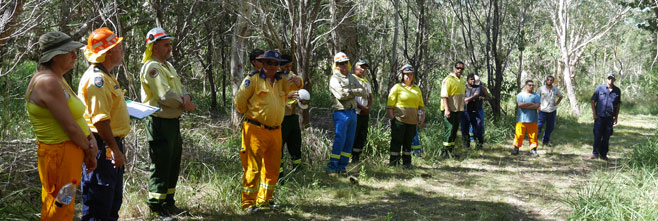
The NSW Rural Fire Service (RFS) Mid North Coast Team assisted by NSW National Parks and Wildlife Service (NPWS) provided Bush Fire Fighting training for a group of North Coast Aboriginal rangers from the 22nd to the 25th of February. Rangers attended from Minyumai, Ngunya Jargoon and Dorrodong IPAs, Darrunda Wajaarr Repair to Country team, and NSW NPWS Yaegl Aboriginal firefighting team.
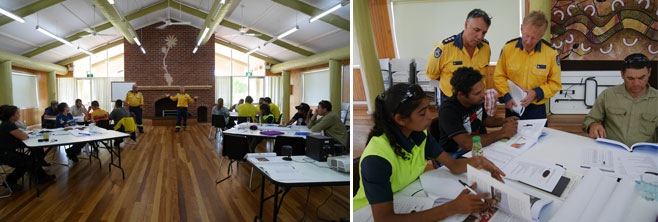
John Allen talks to the group of rangers about Hazard Reductions. Jamie Bertram and John Allen assist rangers Daniel and Belinda Gomes and Grant Rhodes with bushfire-fighting theory.
The week of training was held at Yarrawarra Aboriginal Cultural Centre in Corindi Beach, NSW. The program was delivered and assessed by Jamie Bertram who is a Wiradjuri man and a Community Safety Officer for the Mid North Coast Team NSW RFS, with support from John Allen and Darrayal Luxford from NSW RFS. Aboriginal Ranger Damian Lett from NSW NPWS and local Corindi RFS members were also available to share their experience and expertise throughout the week. Additional mentoring was provided by Yaegl man NPWS firefighter Grant Brown who has recently returned from assisting in Tasmanian firefighting operations.
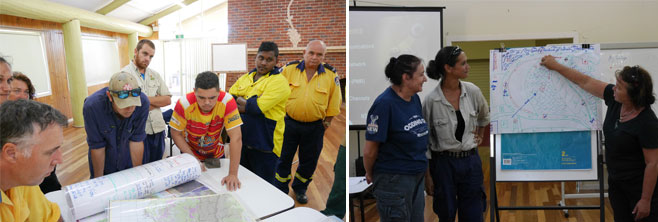
Rangers examine fire management maps and posters. Lisa, Lita and Donna share their Hazard Reduction plan.
The training involved a series of sessions that covered bushfire-fighting theory, practical exercises using bushfire fighting equipment and techniques, and the application of a Hazard Reduction (HR) burn on a nearby private property. During the theory sessions rangers were asked to develop a fire management plan to conduct a HR on a property familiar to them. This allowed the rangers to apply and display their recently learnt knowledge to the group and it was a great way to get everyone talking about what they had learnt during the workshop.
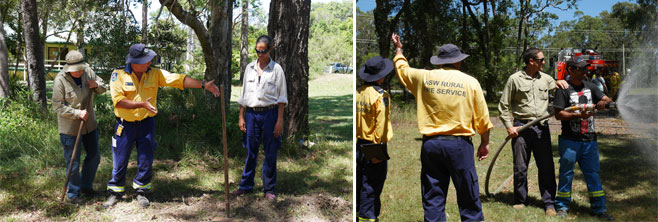
Jamie Bertram explains how to clear a control line using rake hoe’s. Rangers Grant Rhodes and Daniel Gomes practice using the fire hose.
The practical training involved becoming familiar with the fire trucks and equipment, learning how to deploy fire hoses, how to pack them up correctly, and how to rake a control line using rake hoe’s. Jamie Bertram also demonstrated to the group how to access a fire hydrant to refill the fire tuck.

Yaegl NPWS rangers practice rolling up the fire hose. Rangers try out the water backpack.
The practical sessions were essential for the rangers to become familiar and confident with using the bushfire fighting equipment. The rangers all passed the theory and practical assessments, and are now qualified Bush Fire Fighters with accreditation by TAFE NSW.
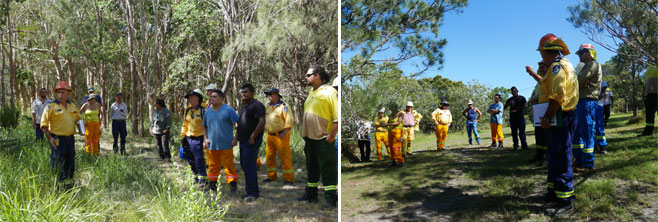
A site assessment of control lines and vegetation conditions was conducted before the HR burn.
As a part of the training a HR burn was scheduled for the afternoon of the final day. However the weather conditions were not favourable for burning, with high temperature and wind conditions beyond the prescription of the HR certificate. Waiting for more favourable weather conditions, the group went to the property to assess the site and to talk about some of the theory and practical knowledge learnt over the week. This involved an inspection of the established control lines, observing changes in vegetation types across the site, and identifying potential hazards on the site such as old car tyres, dead trees and power lines.
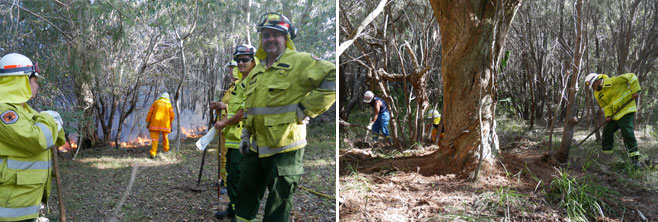
NPWS ranger Damian Lett led a team on the western side of the burn. Rangers raked around the dead trees to protect them from burning.
During the site assessment the weather conditions eased and became more favourable with the temperature and wind dropping to within the HR certificate prescription limits. The RFS members and NPWS representatives discussed the change in weather conditions and the decision was made by the members to conduct the HR burn. A group of rangers were sent to rake around the dead trees to prevent fire from burning them, these trees are potential habitat for arboreal species.
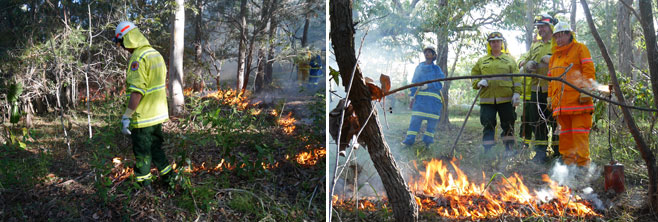
Each ranger had a chance to use the drip torch and maintain the control lines.
The ranger groups prepared for the burn by dressing in their Personal Protective Equipment (PPE) – clothing, helmets, gloves, smoke mask and goggles, and were ready to apply the HR burn. Teams of rangers were deployed along the control lines with the RFS members and their trucks.

Grant Brown from NPWS led the team of rangers who maintained the eastern control line.
With the suitable weather conditions the fire remained at a low intensity as it backed down the slope. As the fire reached the lower part of the burn site the wind increased the flame height, which was controlled by the rangers with the hose lines deployed from the fire trucks on site. The rangers maintained the control lines effectively, with only one spot fire beyond the control lines that was extinguished by the teams. Each participant had a chance to use the drip torch, fire hoses, rake hoe’s and to perform the necessary functions as a part of the team.
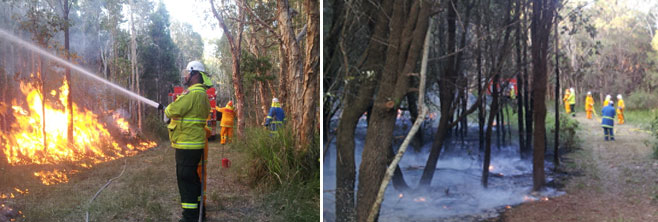
The fire momentarily increased in size and heat as it reached the eastern control line. It was easily contained by the rangers on the control line.
After the fire, the group started to perform the final task of mop up and blackout. Techniques deployed involved the use of rake hoes and hose lines to extinguish any coals or embers on the fire ground. The mop up or ‘black out’ process is very important to ensure that the fire ground is safe to leave without the threat of the fire reigniting and burning further.
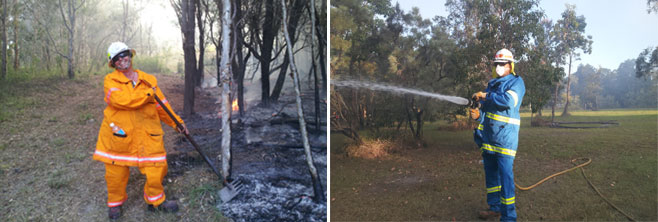
Lisa White from Darrunda Wajaarr Repair to Country team is busy blacking out the fire. Grant Rhodes from Ngunya Jargoon IPA maintains the control line with the water hose.
Firesticks wishes to thank Jamie Bertram, NSW NPWS and NSW RFS members for generously sharing their valuable skills and expertise. These new skills will be well used by the rangers over the coming years as they work on various properties across the Northern Rivers, to manage potential bush fire hazards and to care for country.
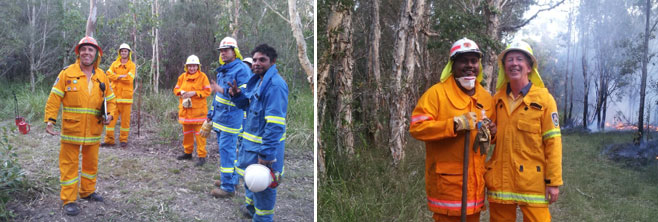
All of the RFS staff and ranger teams were very happy with the work carried out and training that was accomplished.

